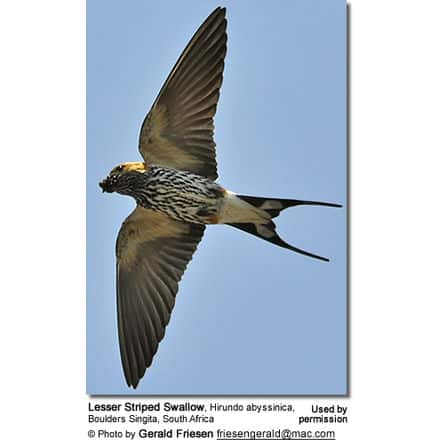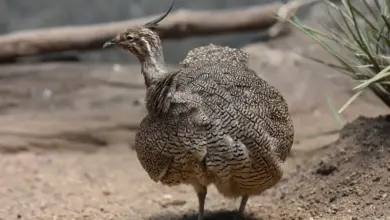Muscovy Duck Feathers: What You Should Know?
In this guide, I will talk about Muscovy Duck feathers, molting, feather plucking, and everything else that those who breed them should know about.
If you are interested in birds (almost any bird, not just muscovies), you must be aware that birds replace their wing and tail feathers with new plumage periodically.
Before getting this breed of duck as a pet, it’s always wise to find out about its feathers and molting habits and how to care for them.
In this article, I will cover everything you need to know about Muscovy duck feathers.

Do Muscovy Ducks Molt?
The largest duck in North America, Muscovies aren’t true ducks.
While they do molt, like any other duck species, their molting cycle is different from that of the more common Mallard ducks.
When Do Muscovy Ducks Molt?
Muscovy ducks typically molt during early Autumn, between July and August.
Female ducks may also remove their downy feathers during the nesting season, known as nesting molt.
This is a common behavior among ducks – they use their feathers to build nests to lay eggs in.
However, you should note that domesticated Muscovy ducks do not have the same molting pattern as feral birds of their species.
Ducks raised in domestic and controlled environments undergo alterations in their molting behavior, and this might vary from one environment to another.
How Often Do Muscovy Ducks, Molt?
Muscovy ducks generally molt only once a year. This is one of the notable differences between them and mallard ducks.
Mallard-derived breeds have two annual molting cycles – an eclipse molt and a nuptial molt. Apart from nesting molts, Muscovies only molt during Autumn.
Not all females molt a lot during the nesting season. Some may remove heaps of feathers, while others only shed a few.

How To Take Care of Muscovy Ducks When They Molt?
Like all pet birds, Muscovy ducks need special care during the molting season.
The fresh feather growth takes a toll on their bodies, draining energy and nutrition.
Besides, the new feathers are also sensitive, and you’ll have to be careful when handling the ducks.
This isn’t a problem for wild mallards and Muscovies as they have plenty of protein-rich food readily available.
Domestic ducks, however, will have to be put on a special diet during this period.
Make sure your Muscovies are getting plenty of leafy greens and protein-rich food when they molt.
Good sources of protein for Muscovy ducks include:
- Mealworms
- Fish
- Fish meal
- Chopped parsley
- Sunflower seeds
- Pumpkin seeds
- Boiled eggs along with the shell
Remember to blend up the boiled eggs properly, so they don’t look like eggs anymore.
You certainly wouldn’t want to teach your ducks to eat their own eggs!
You may also supplement the diet of your molting Muscovies with Brewers Yeast for Vitamin B3.

When Do Muscovy Ducks Start to Get Feathers?
Like all ducks, Muscovies are precocial birds and already have a warm covering of fluffy feathers by the time they hatch.
These feathers are replaced by adult feathers (known as true feathers) in a few weeks.
This is when Muscovies gain their white wing patches.
Baby Muscovy ducks start getting true feathers at around four weeks of age, sometimes even a little earlier.
You should note that the females feather more quickly than the male Muscovies.
Do Muscovy Ducks Pluck?
Feather plucking in ducks is a concerning behavior for poultry owners. Muscovy ducks not only pluck their feathers but may also eat them.
Such behavior is found in both domesticated and free-range Muscovies.
Birds may pluck their feathers due to various reasons ranging from diseases and allergies to loneliness and boredom.
However, severe feather plucking certainly isn’t good for your ducks.
Apart from the physical toll it takes on them, feather plucking may also indicate severe mental stress.
Are Muscovy Ducks Waterproof?
Ducks are generally known to have waterproof feathers that allow them to spend most of their time in the water without getting wet.
Well, Muscovies are an exception.
They aren’t as water-repellant as other species of ducks, as their oil glands aren’t as developed.
Ducks and other aquatic birds have special oil glands known as preen glands.
They rub this oil all over their feathers while preening, creating a protective waterproofing barrier.
(Preening is an avian behavior that involves using the beak to clean and position the feathers.)
Muscovy ducks have such preen glands on their caruncles – the red warty masks on their face.

The gland usually remains shut by a crust of oil.
When Muscovies bathe, the water washes away the crust and allows oil to trickle out drop by drop.
If you see your Muscovy ducks preening their feathers during and after a bath, it means they’re rubbing oil to make the feathers water-repellent.
Muscovies aren’t able to waterproof their feathers as well as other ducks, but they don’t spend much time in water either.
While they can swim, they usually don’t need to.
Besides, Muscovy ducks take a bath only about once a month.
The lack of adequate waterproofing, therefore, isn’t a problem unless a Muscovy duck gets drenched in the rain.
What To Do If Muscovy Duck Feathers Are Fading?
If your Muscovy ducks’ feathers start fading, it usually means they’re about to molt.
This is perfectly normal during the molting season and nothing to worry about.
With time, UV radiation from the sun causes the feathers to fade and lose color.
The faded feathers are simply old plumage that the duck will be losing during the molting season.
However, untimely loss of feather coloration or having faded feathers all the time should be a concern.
If that’s the case, you might want to get your ducks checked out by a vet for health complications.
Frequently Asked Questions
Muscovy duck is losing feathers in head and has black spots?
Symptoms of this condition include thinning and loss of feathers on the head and face, weight loss, lethargy, dark spots on feathers, growth of fungi-like organisms on skin and feather shafts, and increased susceptibility to bacterial infections.
Proper nutrition, including plenty of protein for feather health, could help prevent these diseases.
What signs can you use to identify a male Muscovy duck at four months?
In addition, males will have signature caruncles which are red bumps in clusters on the face and neck area.
By the 4th month, the caruncles might have come in fully, but you may begin to see a few reddish spots here and there.
Many times, male Muscovy ducks will also typically have contrasting black chest feathers with white wing-bar markings.
Females are more gray or brown with no visible white wing bars.
Furthermore, noticeable differences in the size of males compared to females should emerge when they reach this age as well.
Do muscovy ducks shed their feathers?
This process is known as molting, and it occurs naturally after the duck has finished breeding.
With muscovy ducks, the first areas to molt are usually the neck, head, rump feathers, and wing coverts.
After the initial molt is completed, the remaining body feathers will follow suit in a staggered fashion to ensure the duck does not go into a “naked” state all at once.
Molting can also be triggered by environmental changes such as weather or stress levels.
Does muscovy have Drake feathers?
They are large waterfowl that were domesticated and bred for meat in the Americas.
Their feathers are dense and made up of a variety of colors, including white, grey, black, brown, and tan.
Muscovys have long wings with short primaries and tail feathers, making them excellent flyers despite their size.
The only distinguishing feature between male and female Muscovy is the caruncles or red warty bumps on the head of the male birds.
Wrapping up
Muscovies are an interesting species.
Not only do they have much heavier body weights than other ducks, but they’re also capable of flight, have a different molting pattern, and can roost in trees.
They also make great pets, and their tasty eggs and meat make them a great choice for poultries.
By now, I hope you know about molting behavior in Muscovies and how to take care of them during the molting season.
Thank you for reading!




